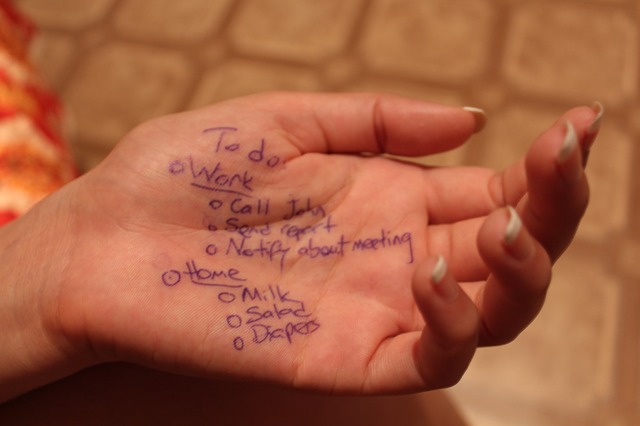Better Blogging, Easier Reading: Optimizing Blog Content
Only very few people read an article online word by word. Studies have shown that only 16 percent of internet users read entire articles. Thus, the best advice I can give you is to make your content scannable. This assures that your website's visitors have an easy time receiving information.
Make your content scannable. The easier it is to grasp your posts' content, the more time people will spend on your website.
The average web user will barely spend any time on a blog when he got there via Google. You might have already noticed that in your Google Analytics statistics. On top of that, the average visitor will only grasp 60 percent of the things he reads.
This is not a good basis for content that is not optimized. Visitors are looking for keywords, specific terms, interesting subheadings, and visual tips.
Studies have proven that it is arduous to read text on a screen, which is why it's done about 25 percent slower than reading a piece of paper. Thus, scanning content is a technique that us writers should focus on the most.
Further Information:
 Image by bohed from Pixabay
The only thing you should pay attention to is a semi-proper formatting of the ennumeration's HTML output. The list items shouldn't "stick" together, but should have a little room below each one, like a normal paragraph.
Image by bohed from Pixabay
The only thing you should pay attention to is a semi-proper formatting of the ennumeration's HTML output. The list items shouldn't "stick" together, but should have a little room below each one, like a normal paragraph.
 Image by Gerd Altmann from Pixabay
There's almost nothing worse than having endless text deserts in front of you that you have to fight through to receive the desired information.
Image by Gerd Altmann from Pixabay
There's almost nothing worse than having endless text deserts in front of you that you have to fight through to receive the desired information.
 Image by garretsonda from Pixabay
Many bloggers bury the important information in a desert of unnecessary text sections. They simply don't get to the point, but constantly beat around the bush. Sometimes, I tend to do so as well. That's why it's crucial to read your texts again, and to simply cross out everything that's not of importance.
Webtexts should be short and brief. You'll find more people that want to read this type of content.
(dpe)
Image by StockSnap from Pixabay
Image by garretsonda from Pixabay
Many bloggers bury the important information in a desert of unnecessary text sections. They simply don't get to the point, but constantly beat around the bush. Sometimes, I tend to do so as well. That's why it's crucial to read your texts again, and to simply cross out everything that's not of importance.
Webtexts should be short and brief. You'll find more people that want to read this type of content.
(dpe)
Image by StockSnap from Pixabay
Techniques to Make Your Blog Scannable
Here are a few tips that you can use to create scannable content.1 - Create List Posts
One particular format of blog articles that works especially well is the list format. If you have been writing for a while, and if you have written plenty of list articles already, you'll be able to trace this back in your statistics. Lists make visitors assume that they will get what they are looking for in very few steps. Image by bohed from Pixabay
The only thing you should pay attention to is a semi-proper formatting of the ennumeration's HTML output. The list items shouldn't "stick" together, but should have a little room below each one, like a normal paragraph.
Image by bohed from Pixabay
The only thing you should pay attention to is a semi-proper formatting of the ennumeration's HTML output. The list items shouldn't "stick" together, but should have a little room below each one, like a normal paragraph.
2 - The Formatting
Use bold font for important aspects, apply italic font to emphasize statements. Experiment with the alignment of small text areas. Also make sure to use a proper font size. Many readers are easily frustrated by small writing. Also test backgrounds of different colors in certain places.3 - Use Quotes and Colored Boxes to Gain Attention
The idea behind it is to loosen up a text desert, and to convey relaxation to the reader. That's why you should use quotes in your text, or colorful boxes for important statements. These are true eye catchers that will draw the attention to themselves. This will also make the readers happy as they will be able to find the solution faster if you make smart use of these areas.Quotes do a Great Job at Loosening Up a Text Desert, and They Are True Eye Catchers
4 - Subheadings
Good subheadings are a good way to mellow your texts, and do something for the search engine optimization at the same time by using the <h> tags. Good subheadings are written in a way that makes readers curious, but doesn't give too much information. These headings help your readers to find the interesting parts of your texts, and receive the desired information faster.5 - Use Images
Intelligent use of images can get your posts a lot of attention. They are able to emphasize or highlight certain aspects. Using high-quality images can make your articles appear more professional, as well as awaken interest. Image by Gerd Altmann from Pixabay
There's almost nothing worse than having endless text deserts in front of you that you have to fight through to receive the desired information.
Image by Gerd Altmann from Pixabay
There's almost nothing worse than having endless text deserts in front of you that you have to fight through to receive the desired information.
6 - Use Short Paragraphs
Short paragraphs make texts more concise and allow for easier perception of the content. Users easily get lost in long paragraphs. So let's make it simple and break down our texts into short sections. As a rule of thumb, you could set your goal to be "one idea per paragraph".7 - Get to the Point
 Image by garretsonda from Pixabay
Many bloggers bury the important information in a desert of unnecessary text sections. They simply don't get to the point, but constantly beat around the bush. Sometimes, I tend to do so as well. That's why it's crucial to read your texts again, and to simply cross out everything that's not of importance.
Webtexts should be short and brief. You'll find more people that want to read this type of content.
(dpe)
Image by StockSnap from Pixabay
Image by garretsonda from Pixabay
Many bloggers bury the important information in a desert of unnecessary text sections. They simply don't get to the point, but constantly beat around the bush. Sometimes, I tend to do so as well. That's why it's crucial to read your texts again, and to simply cross out everything that's not of importance.
Webtexts should be short and brief. You'll find more people that want to read this type of content.
(dpe)
Image by StockSnap from Pixabay

Thank you, Andreas. Simple yet effective points to keep in mind as we plan, write, and revise our blog posts. You suggest an interesting distinction between readers who arrive at the post through Google search or readers who are active followers of the blog. The former are more likely to quickly scan the article for the information they were searching for. On the other hand, an avid reader of the blog may be inclined to read more closely. In either case, your suggestions make reading easier for either type.
Some people think bold is a crutch – but whatever makes things more readable in my opinion!
Great tips. Indeed quotes and colored box looks nice and gather more attention to dedicated part of article. And of course need always trying to get to the point so customer could find required information and save the article in bookmarks or share it.
Very nice tips, I would definitely use these tips for creating easy to read articles.